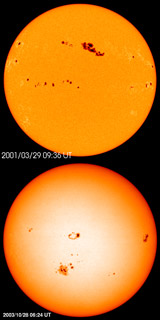These two pictures show sunspots on the Sun in 2001 (top) and 2003 (bottom). Sunspots only form near the Sun's equator and are never seen near the Sun's poles.
Click on image for full size
Images courtesy of SOHO/NASA/ESA.
The Sun's Poles
Like Earth, the Sun has a North Pole, a South Pole, and an equator. The poles of the Sun are different in several ways from the areas near the Sun's equator.
The Sun has a magnetic field with North and South Magnetic Poles. About every 11 years, the Sun's magnetic poles flip - North becomes South and vice versa. This flip happens around the peak of the sunspot cycle, when there are lots of sunspots. Earth's magnetic poles sometimes flip, too. However, it is usually many thousands or even millions of years between flips of Earth's field - not just 11 years!
Did you know that the Sun has spots? Sunspots are places on the "surface" of the Sun where the magnetic field is much, much stronger than normal. Sunspots only appear near the Sun's equator, between about 40° North and 40° South latitude. Sunspots never appear near the Sun's poles.
The Sun is not a solid object. It is giant ball of gas and plasma. Some parts of the Sun rotate more slowly than other parts. At the equator, the Sun spins pretty fast. It takes 25 days to turn all the way around. It turns more slowly at the poles. The poles take 34 days to spin around once.
The Sun's atmosphere at the poles is also different from the atmosphere above the Sun's equator. The corona, part of the Sun's atmosphere, sticks out further from the Sun's surface near the equator. The corona doesn't stick out as far above the poles. The solar wind is also different at the poles. It "blows" much faster above the poles than it does above the Sun's equator.
You might also be interested in:
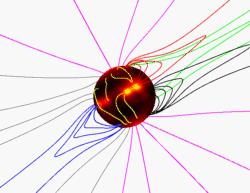
The Sun has a very large and very complex magnetic field. The magnetic field at an average place on the Sun is around 1 Gauss, about twice as strong as the average field on the surface of Earth (around
...more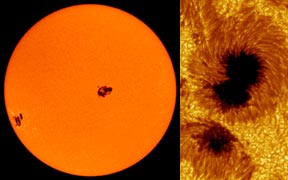
Sunspots are dark, planet-sized regions that appear on the "surface" of the Sun. Sunspots are "dark" because they are colder than the areas around them. A large sunspot might have a temperature of about
...more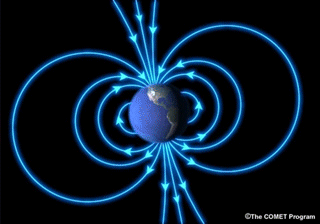
Earth has a magnetic field. If you imagine a gigantic bar magnet inside of Earth, you'll have a pretty good idea what Earth's magnetic field is shaped like. Of course, Earth DOESN'T have a giant bar magnet
...more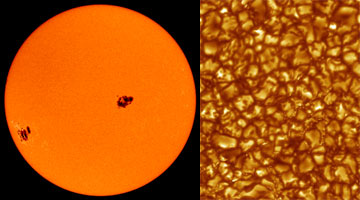
Most of the energy we receive from the Sun is the visible (white) light emitted from the photosphere. The photosphere is one of the coolest regions of the Sun (6000 K), so only a small fraction (0.1%)
...more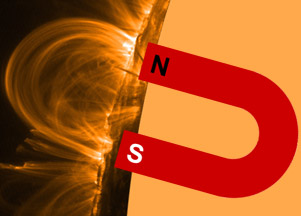
Sunspots are caused by very strong magnetic fields on the Sun. The best way to think about the very complicated process of sunspot formation is to think of magnetic "ropes" breaking through the visible
...more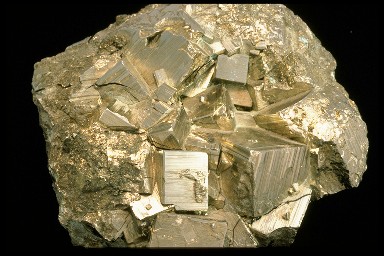
Solid is one of the four common states of matter. The three others are gas, liquid, and plasma. There are also some other exotic states of matter that have been discovered in recent years. Unlike liquids
...more
Plasma is known as the fourth state of matter. The other three states are solid, liquid and gas.In most cases, matter on Earth has electrons that orbit around the atom's nucleus. The negatively charged
...more


